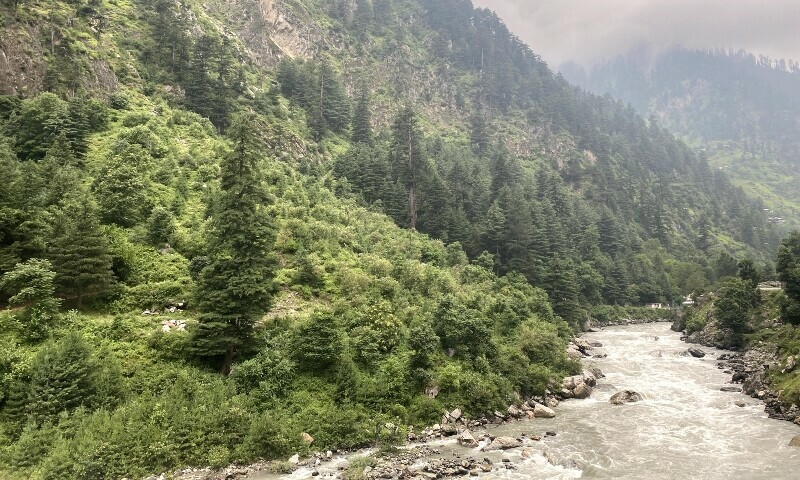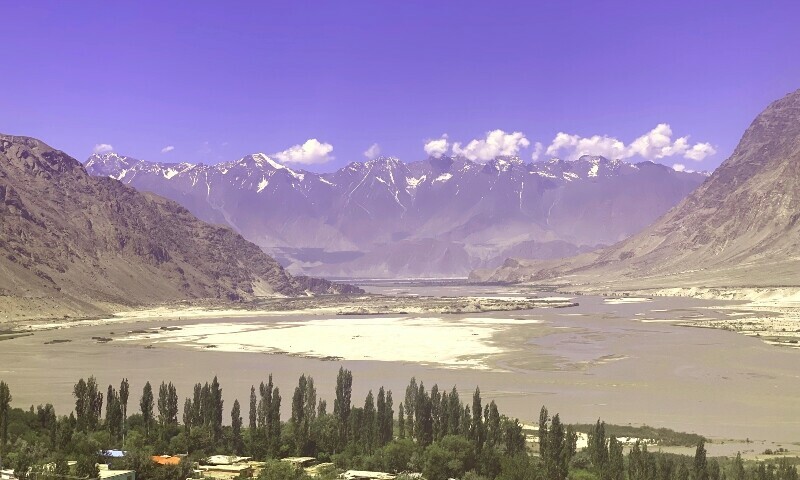How to install the app on iOS
Follow along with the video below to see how to install our site as a web app on your home screen.
Note: This feature may not be available in some browsers.
You are using an out of date browser. It may not display this or other websites correctly.
You should upgrade or use an alternative browser.
You should upgrade or use an alternative browser.
Pictures from GB
- Thread starter ghazi52
- Start date
ghazi52
PDF THINK TANK: ANALYST

- Joined
- Mar 21, 2007
- Messages
- 104,348
- Reaction score
- 106
- Country
- Location
.,.,

To be on top of the second-highest plateau in the world, popularly known as the Deosai Plains, in the July summer was to feel almost unwanted. This was a place where humans are scarce, where silence hums and the fragrance of flowers, of every colour, fills the winds.

A map of the Deosai National Park prepared by locals.
A friend in Karachi, a wanderlust man of good taste, had spoken to me of Skardu — where the Deosai Plains are located — one evening. He told me of the intimidating Karakoram mountains, of small tea shops and of forts dating back centuries.
I desperately wanted to go. I was mourning the lush green mountains of Naran I had visited a few years back. But little did I know that the wonder of travel lies less in the reminiscence of lost time and more in the discovery of the new.
A week after the meeting with my friend, I met Amjad Maqpoon at a three-star hotel in Islamabad. It was a relief to see the lanky man with his wide-teeth smile and Balti accent, materialise out of a speculative WhatsApp group titled “Skardu-Deosai”. He was introduced to me by a local tour company, the ones that pop up on Instagram feeds every summer. We agreed on a price and decided to leave for Gilgit-Baltistan at 4am the next day.
The journey to the land of the mountains commenced with a flat tyre and an air-conditioning system that was best left untouched. But soon, we were zooming past the Hazara Motorway, out of the comfort of the capital’s sleek roads, towards a discreet rugged terrain, the mystery of which kept me up throughout the bumpy drive. I caught flashes of pine trees in deep shades of green framed against the deep blue sky and clear water of the Kunhar river.

The lush green pine trees of Naran as the Kunhar river cascades its way down from the Lulusar Lake.

To be on top of the second-highest plateau in the world, popularly known as the Deosai Plains, in the July summer was to feel almost unwanted. This was a place where humans are scarce, where silence hums and the fragrance of flowers, of every colour, fills the winds.

A map of the Deosai National Park prepared by locals.
A journey along the Indus
One has to sit through a four-hour ride and traverse through a gnarled trail carved out of ancient rocks to reach the “roof of the world”, far beyond colonial boundaries and modern tensions, situated in the heart of the Western Himalayas at an elevation of 4,114 meters or 13,497 feet.A friend in Karachi, a wanderlust man of good taste, had spoken to me of Skardu — where the Deosai Plains are located — one evening. He told me of the intimidating Karakoram mountains, of small tea shops and of forts dating back centuries.
I desperately wanted to go. I was mourning the lush green mountains of Naran I had visited a few years back. But little did I know that the wonder of travel lies less in the reminiscence of lost time and more in the discovery of the new.
A week after the meeting with my friend, I met Amjad Maqpoon at a three-star hotel in Islamabad. It was a relief to see the lanky man with his wide-teeth smile and Balti accent, materialise out of a speculative WhatsApp group titled “Skardu-Deosai”. He was introduced to me by a local tour company, the ones that pop up on Instagram feeds every summer. We agreed on a price and decided to leave for Gilgit-Baltistan at 4am the next day.
The journey to the land of the mountains commenced with a flat tyre and an air-conditioning system that was best left untouched. But soon, we were zooming past the Hazara Motorway, out of the comfort of the capital’s sleek roads, towards a discreet rugged terrain, the mystery of which kept me up throughout the bumpy drive. I caught flashes of pine trees in deep shades of green framed against the deep blue sky and clear water of the Kunhar river.

The lush green pine trees of Naran as the Kunhar river cascades its way down from the Lulusar Lake.

Lost and found in Skardu — where mountains meet the soul
They say rivers have memories. After that dunk into the Mathoka Waterfall, I knew they were right.
www.dawn.com
ghazi52
PDF THINK TANK: ANALYST

- Joined
- Mar 21, 2007
- Messages
- 104,348
- Reaction score
- 106
- Country
- Location
.,.,.,
Three different faces of Nangaparbat.

According to locals the killer mountain has one hundred faces from different locations. In local language ( Shina ) Nagngaparbat is known as ( Shal Mukhi ) “Shal” means “hundred” and “Mukhi ” means “Faces”.
In this picture most famous 3 faces from different regions are mentioned



Three different faces of Nangaparbat.

According to locals the killer mountain has one hundred faces from different locations. In local language ( Shina ) Nagngaparbat is known as ( Shal Mukhi ) “Shal” means “hundred” and “Mukhi ” means “Faces”.
In this picture most famous 3 faces from different regions are mentioned



ghazi52
PDF THINK TANK: ANALYST

- Joined
- Mar 21, 2007
- Messages
- 104,348
- Reaction score
- 106
- Country
- Location
Hunza  ( Gulmit, Gojal)
( Gulmit, Gojal)
Passu (پسو) is a small village located in theGilgit Baltistan region of northern Pakistan.
Situated along the Karakoram Highway in Upper Hunza, Passu is a popular tourist destination because of its easily accessible sweeping landscapes, and vistas of the 7,478 m (24,534 ft) tall Passu Sar mountain, the Passu Glacier, and Passu Cones.
 ️ Tupopdan 6,106 metres (20,033 ft) also known as 'Passu Cones' or 'Passu Cathedral', lies to the north of the Gulmit village in Gojal Valley.
️ Tupopdan 6,106 metres (20,033 ft) also known as 'Passu Cones' or 'Passu Cathedral', lies to the north of the Gulmit village in Gojal Valley.
It is the most photographed peak of the region.

Passu (پسو) is a small village located in theGilgit Baltistan region of northern Pakistan.
Situated along the Karakoram Highway in Upper Hunza, Passu is a popular tourist destination because of its easily accessible sweeping landscapes, and vistas of the 7,478 m (24,534 ft) tall Passu Sar mountain, the Passu Glacier, and Passu Cones.
It is the most photographed peak of the region.
Similar threads
- Article
- Replies
- 0
- Views
- 189
- Replies
- 0
- Views
- 357
- Replies
- 0
- Views
- 726
- Replies
- 2
- Views
- 996
